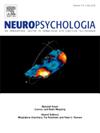Where creativity meets aesthetics: The Mirror Model of Art revisited with fMRI
IF 2
3区 心理学
Q3 BEHAVIORAL SCIENCES
引用次数: 0
Abstract
How meaning is conveyed from creator to observer is debated in the psychology of art. The Mirror Model of Art represents a theoretical framework for bridging the psychological processes that underpin creative production and aesthetic appreciation of art. Specifically, it postulates that creating art and having an aesthetic experience are “mirrored” processes such that the early stage of aesthetic appreciation corresponds to the late stage of creative production, and conversely, that the late stage of aesthetic appreciation corresponds to the early stage of creative production. We conducted a meta-analysis of fMRI studies in the visual domain to test this hypothesis. Our results reveal that creative production engages the prefrontal cortex, which we attribute to its role in idea generation, whereas aesthetic appreciation engages the visual cortex, anterior insula, parahippocampal gyrus, the fusiform gyrus, and the frontal lobes, regions involved primarily in sensory, perceptual, reward and mnemonic processing. Their direct comparison revealed that creative production was associated with greater activation in the prefrontal cortex, whereas aesthetic appreciation was associated with greater activation in the visual cortex. This meta-analysis largely supports predictions derived from the Mirror Model of Art, by providing a snapshot of neural activity in the relatively early stages in art creators' and observers’ minds. Future studies that capture brain function across longer spans of time are needed to understand the expression of creativity and aesthetic appreciation in different stages of information processing in relation to the Mirror Model of Art.
创造力与美学的结合:用 fMRI 重新审视艺术的镜像模型。
在艺术心理学中,如何将意义从创作者传递给观察者是一个争论不休的问题。艺术镜像模型代表了一种理论框架,用于连接艺术创作和审美鉴赏的心理过程。具体来说,该模型假设艺术创作和审美体验是 "镜像 "过程,即审美鉴赏的早期阶段与创造性创作的晚期阶段相对应,反之,审美鉴赏的晚期阶段与创造性创作的早期阶段相对应。为了验证这一假设,我们对视觉领域的 fMRI 研究进行了荟萃分析。我们的研究结果表明,创造性的产生需要前额叶皮层的参与,我们将其归因于前额叶皮层在想法产生中的作用,而审美鉴赏则需要视觉皮层、岛叶前部、海马旁回、纺锤形回和额叶的参与,这些区域主要参与感觉、知觉、奖赏和记忆处理。他们的直接比较显示,创造性的产生与前额叶皮层的更大激活有关,而审美鉴赏则与视觉皮层的更大激活有关。这项荟萃分析提供了艺术创作者和观察者大脑相对早期阶段的神经活动快照,在很大程度上支持了 "艺术镜像模型 "的预测。未来的研究需要在更长的时间跨度内捕捉大脑功能,以了解创造力和审美鉴赏力在不同信息处理阶段的表现与艺术镜像模型的关系。
本文章由计算机程序翻译,如有差异,请以英文原文为准。
求助全文
约1分钟内获得全文
求助全文
来源期刊

Neuropsychologia
医学-行为科学
CiteScore
5.10
自引率
3.80%
发文量
228
审稿时长
4 months
期刊介绍:
Neuropsychologia is an international interdisciplinary journal devoted to experimental and theoretical contributions that advance understanding of human cognition and behavior from a neuroscience perspective. The journal will consider for publication studies that link brain function with cognitive processes, including attention and awareness, action and motor control, executive functions and cognitive control, memory, language, and emotion and social cognition.
 求助内容:
求助内容: 应助结果提醒方式:
应助结果提醒方式:


